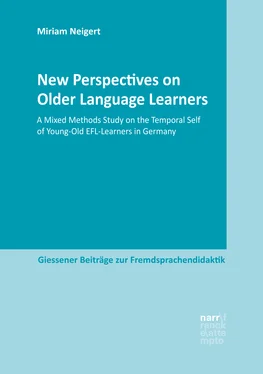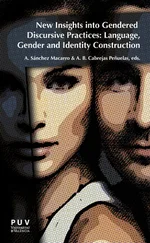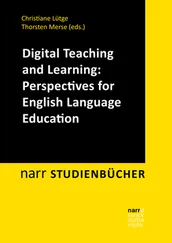As mentioned in the previous section, self-concepts are stable and dynamic at the same time and thus peripheral concepts are more susceptible to change than core self-concepts (Markus & Wurf, 1987). Sometimes they can even become part of our core self-concept and change it. On the one hand, as we are learning more about ourselves through experience, this shapes our current self-concept accordingly. On the other hand, Neisser (1997: 4) writes “the opposite direction of causation is also important: If I behave in certain ways in order to live up to an idealized self-concept, for example, my real self is being partly shaped by my conceptual self.” In other words, self-concept is not the passive receiver of our experiences but also has the power to make changes to the core perceptions if deemed necessary. What do I mean by writing ‘if deemed necessary’ ?
I wrote at the beginning of this section that we scan, confirm, or disconfirm pieces of incoming information. But I have not discussed where this information comes from and how we decide whether it contains, as Markus and Wurf (1987: 328) wrote, “self-relevant meaning” or not. Rubio (2014: 43) lists some of the most important factors which help us to determine this: “The process of perception for the self-concept, as happens when looking at a picture, can vary depending on the personal maturation of the self, age, personality, situational conditions, metacognitive strategies, and many other individual contextual factors.” What Rubio does not explicitly mention here are if and in what way other factors such as ‘gender’ and ‘significant others’ (in the case of young-old learners, significant others could be other learners, the teacher, but also partners, children, grandchildren, and friends) can influence our self-concept. Some of the factors listed by Rubio and these two additional factors, which will be important for my research context, need further discussion.
In Rubio’s quote we can detect the premise of a dynamic or changing self-concept, which is dependent on the process of perception in different situations and contexts. Related to this, Shavelson et al. (1976: 412ff.) postulated that within the framework of their hierarchical model, self-concept facets become more dynamic (or less stable) when moving downwards from the apex, i.e. when moving from “General Self-Concept” down to “Evaluation of Behavior in Specific Situations” (in the case of EFL, this specific situation could be the acting out of a role-play together with another learner) in their model. According to Markus and Wurf (1987: 328), self-concept is considered to be dynamic in that it is “an active, interpretive structure that is continually involved in the regulation of on-going behaviour” – which they have depicted in their model of the dynamic self-concept. They support the view that there is not a single, unitary self-concept but that it rather consists of active and non-active parts.
Markus and Wurf (1987) refer to the active parts of our self-concept as the working self-concept (see also: Markus & Nurius 1986) and describe it as “continually active, shifting array of accessible self-knowledge” (p. 306). The working self-concept comprises self-representations, which have been or can be activated through internal processes (e.g. motivational state) and/or through current social situations, which is why they also refer to it as “self-concept of the moment” (ibid.). In their model, self-concept (core) is a collection of self-representations, which are – in contrast to their subset in the working self-concept – not accessible in a particular situation (ibid.: 314). It also illustrates how our working self-concepts affect – and are affected by – intrapersonal behaviour and interpersonal behaviour. Markus and Wurf (1987: 306) conclude: “The working self-concept thus consists of the core self-conceptions embedded in a context of more tentative self-conceptions that are tied to the prevailing circumstances.” Based on this, their model can be linked to the symbolic interactionsts’ view that self-concepts are greatly affected by social conditions. Additionally to that, it also accounts for the, at first, paradoxical sounding claim that our self-concepts are stable and malleable at the same time (ibid.).
Age and our ageing process also affect the development of our self-concepts. We start to form our self-concepts quite early in our lives, i.e. towards the first year (Neisser 1993: 5; see also: Tomasello 1993). And, as mentioned before, self-concepts become increasingly differentiated and multidimensional, as we grow older (Shavelson et al. 1976; Byrne & Shavelson 1996; Leung et al. 2013). The hierarchical model reflects this by the number of different domains in academic and non-academic self-concepts.
It should be noted, though, that this process does not mean we only differentiate our self into more unrelated, distinct self-concepts, but that we simultaneously integrate similar or related self-concepts. In the words of Marsh and Ayotte (2003): “with increasing age and cognitive development, there are counterbalancing processes of integration and differentiation” (p. 702). The notion of a more differentiated self-concept with increasing age, however, has mainly been tested and validated for children, pre-adolescents, and adolescents (cf. Byrne 1996a). As we will see in chapter 5, the lack of appropriate research instruments (e.g. questionnaire items that consider the age-specific situation of individuals post-retirement) for older participants is still an issue. Our cognitive development (maturation) has an impact on how we deal with incoming information to develop our self-concept. The types of information we receive from outside – i.e. the question of what we receive – also shape our self-concept. This external information can come from our own actions but also from other people around us. Thus, we need to ask next: What roles do significant others around us play in shaping our self-concepts?
The two symbolic interactionists Cooley (1902) and Mead (1922) highlighted the idea that the formation of self is a social process. Cooley’s looking glass self , summarized in his couplet “Each to each a looking glass, reflects the other that doth pass” (1922: 184), illustrates that we construct our selves based on our perceptions of how people around us perceive us (see also: Oyserman & Markus 1998; Swann & Bosson 2010). We internalize the appraisals of significant others. Bouchey and Harter (2005), for instance, based their study on this premise. They revealed that reflected appraisals of parents and teachers (“socializers”) influence students’ academic self-perceptions during early adolescence. Interestingly, perceived reflected appraisals of adults even had a stronger impact than those of their peers (ibid.: 682).
Since the young-old are not as dependent on “socializers” as adolescents, does this mean that they are more independent in forming their self-concepts, i.e. the looking glass is no longer needed? Or, is it that the perspectives are reversed? Are many of the significant others shaping the young-old’s self-concept now part of younger generations: children, grandchildren, and – quite often – their English teachers? To the best of my knowledge, research is still needed to investigate if there is still an impact of this reverse situation on self-concept.
Another study by Harter and Whitesell (2003) points to the case of ‘major life transitions’ and their influence on self-concept formation. In their study, they noticed that even when moving on from high school to college, approval received from significant others had an impact on participants’ global self-worth.2 They posited:
With regard to the applicability of Cooley’s formulation, one may question whether external approval should have such an impact if, over the course of development, one presumably internalizes the perceived approval of significant others such that one is no longer dependent on this type of social feedback. (p. 1041)
Читать дальше












